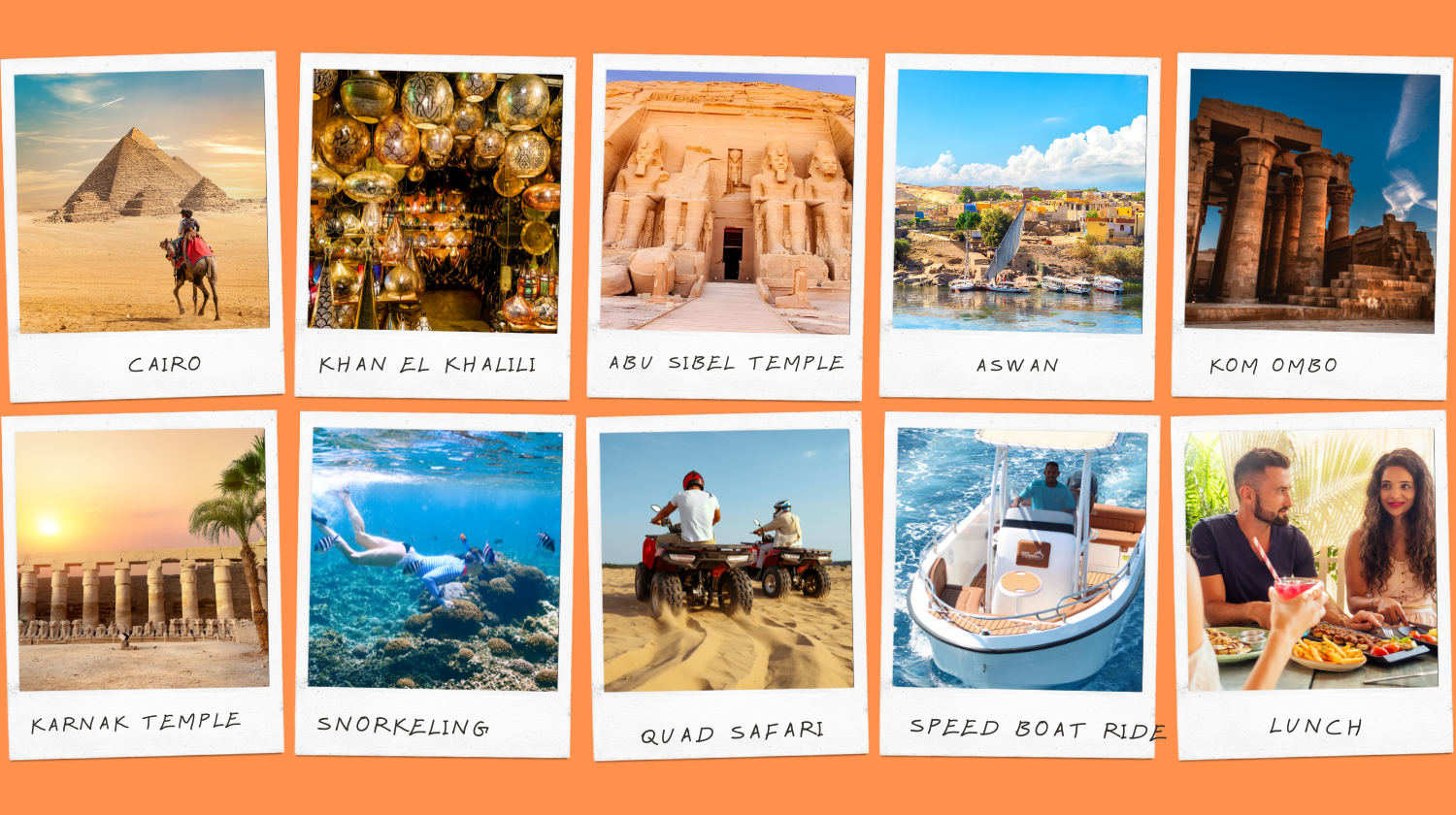Blogs
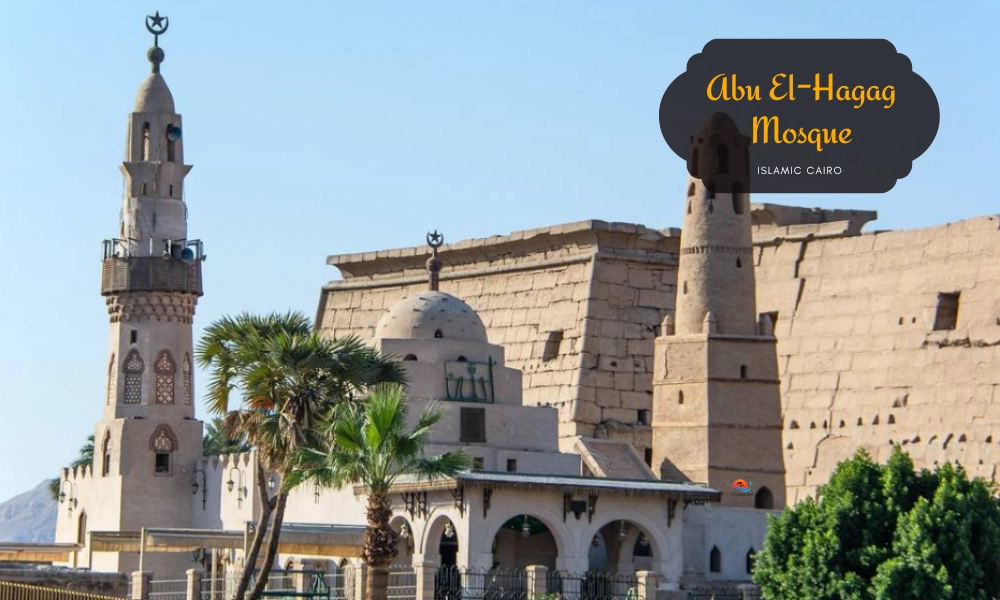
Abu El-Hagag Mosque
Stepping into the rushy streets of Egypt, you experience a vibe of the place, and quickly feel that where I am is not a historic district, but it has brought up a legacy of many dynasties, and this is the place where Islamic civilization rose in Egypt. Looking upward, you see a giant but fascinating minaret touching the borders of the sky, and in the next moment, you see a light passing through traditional-style mashrabiyas windows and entering the courtyard. Every single moment, a wall, and every symbol delivers a story of empire, scholars, and saints. As it contains the legacy of different dynasties such as Fatimid, Ayyubid, Mamluk, and Ottoman, representing the culture of each decade through power, faith, and art.
Beyond the attractiveness of mosques like Al-Azhar and Sultan Hassan mosque, you’ll find a spiritual jewel inside the Abu El-Hagag Mosque, representing its gratitude and respect. Though less renowned internationally, it is deeply cherished within Egypt as a place where history and spirituality converge. This mosque is more than a religious structure; it is a symbol of Sufi devotion, community identity, and architectural endurance.
At the heart of its story is Sheikh Abu El-Hagag, a revered Sufi saint whose life and teachings shaped religious landscape. His name, etched into the identity of the mosque, continues to inspire reverence centuries after his time. To step into Abu El-Hagag Mosque is to step into a sanctuary that unites faith, history, and cultural memory, making it an essential chapter in Cairo’s/Luxor vast Islamic heritage. This guide has been compiled to guide you about Sheikh Abu El-Hagag in detail. Let’s deep dive into it.
Table of Contents
- Who Was Sheikh Abu El-Hagag? The Man Behind the Mosque
- Historical Origins of Abu El-Hagag Mosque
- Architectural Features
- The Mosque’s Role in the Spiritual and Social Life
- Abu El-Hagag Mosque in Modern Islamic Cairo
- Unique Features and Cultural Importance
- Preservation Efforts and Challenges
- Visiting Abu El-Hagag Mosque: What You Need to Know
- Conclusión:
Who Was Sheikh Abu El-Hagag? The Man Behind the Mosque
At the heart of this mosque’s significance lies the memory of Sheikh Abu El-Hagag, a revered Sufi saint whose life and teachings inspired generations.
- Biography: Sheikh Abu El-Hagag, also known as Yusuf Abu el-Hajjaj, lived during the medieval Islamic period. He was widely respected for his piety, scholarship, and spiritual leadership within the Sufi tradition.
- Religious Influence: He played a central role in guiding disciples and spreading Sufi teachings that emphasized love, humility, and closeness to God. His spiritual gatherings and teachings left a strong mark.
- Why a Mosque Was Dedicated to Him: Following his death, his tomb became a pilgrimage site, revered by locals and travelers alike. Over time, a mosque was built to honor his memory, transforming his burial place into both a shrine and a center of worship.
Through this, Sheikh Abu El-Hagag’s legacy continues to live on, merging spirituality with the architectural fabric of Cairo.
Historical Origins of Abu El-Hagag Mosque
The origins of the Abu El-Hagag Mosque date back to Cairo’s flourishing period as a hub of Islamic scholarship and spirituality.
- Date of Construction: The mosque was originally constructed during the Ayyubid dynasty (12th–13th centuries), a time when Cairo was consolidating its reputation as the intellectual and spiritual capital of the Islamic world.
- Founders and Patrons: The mosque was commissioned by local patrons who sought to honor Sheikh Abu El-Hagag and to provide a spiritual space for the community.
- Connection to Islamic Dynasties: Over centuries, the mosque received support from the Mamluks and Ottomans, both of whom contributed to renovations and expansions. These dynasties valued mosques not only as places of worship but also as symbols of legitimacy and cultural pride.
Thus, Abu El-Hagag Mosque reflects a blend of dynastic patronage and community devotion, anchoring it firmly in Cairo’s Islamic history.
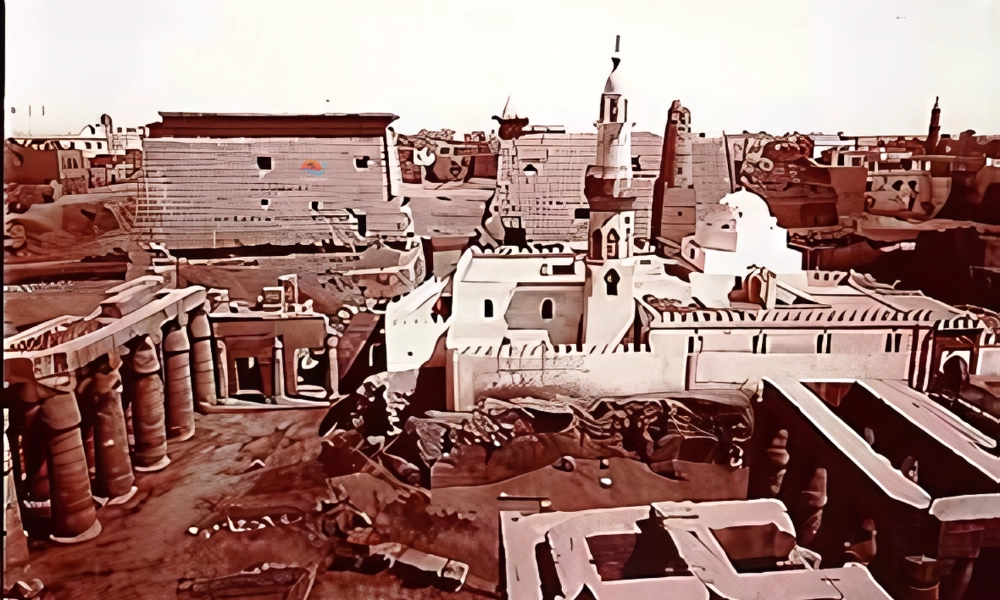
Architectural Features
One of the defining aspects of the Abu El-Hagag Mosque is its unique blend of architectural influences from different dynastic periods.
- Original Architectural Elements:
- Minarets: The mosque features tall, elegant minarets that dominate its skyline.
- Dome: A central dome, typical of Mamluk architecture, provides balance and grandeur.
- Mihrab: The prayer niche (mihrab) is beautifully decorated with Islamic calligraphy and geometric designs.
- Courtyards: Open courtyards provide space for gatherings, reflecting both spiritual and social purposes.
- Renovations and Expansions: The mosque underwent significant renovations under the Mamluks, who were known for their architectural patronage, and later under the Ottomans, who introduced more ornamental features.
- Influences of Different Periods:
- Fatimid: Early Islamic influence, seen in the emphasis on simplicity and function.
- Ayyubid: The original construction, marked by fortress-like strength.
- Mamluk: Added elaborate decoration and structural enhancements.
- Ottoman: Introduced calligraphic panels, tile work, and more intricate domes.
The Mosque’s Role in the Spiritual and Social Life
Beyond its walls, the mosque has always played a dynamic role in social and religious life.
- Islamic Education and Sufism: Historically, it served as a teaching center where scholars and Sufi leaders instructed disciples in theology, mysticism, and ethics.
- Religious Festivals: Annual gatherings in honor of Sheikh Abu El-Hagag became important religious festivals, marked by recitations, processions, and communal feasts.
- Community Influence: Over the centuries, the mosque has functioned as a hub for public meetings, dispute resolution, and community solidarity, reflecting the mosque’s central place in Islamic society.
Through these roles, Abu El-Hagag Mosque has acted not just as a religious building but as a pillar of Cairo’s community life.
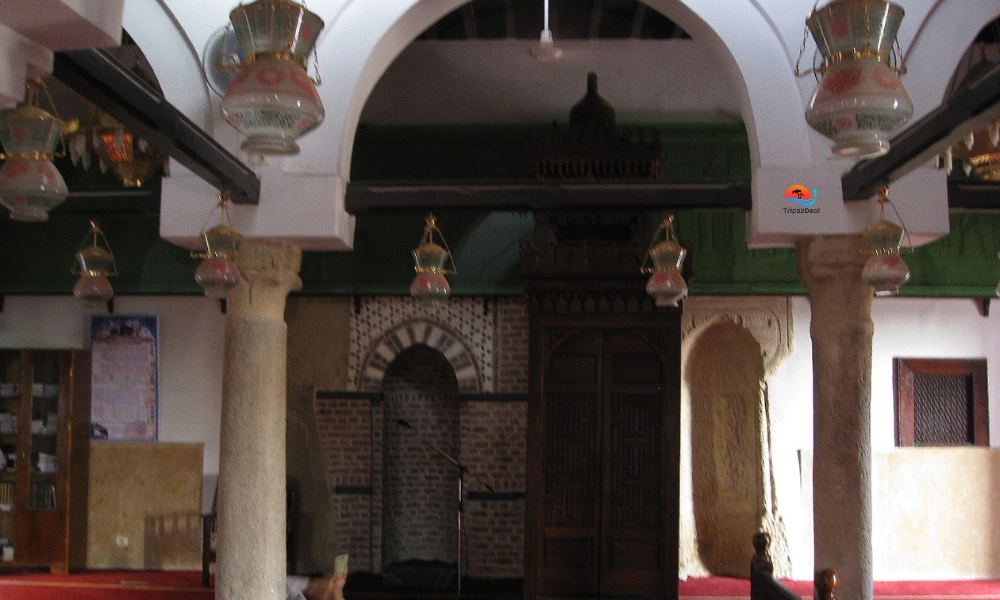
Abu El-Hagag Mosque in Modern Islamic Cairo
In the present day, Abu El-Hagag Mosque continues to stand as a bridge between past and present.
- Current Status: It remains an active mosque, hosting daily prayers and Friday sermons while also serving as a tourist attraction.
- Restorations: The mosque has undergone multiple restoration projects, led both by the Egyptian government and international heritage organizations, to preserve its historic fabric.
- Modern Role: Today, it functions as:
- A community mosque for worshippers.
- A Sufi gathering place for spiritual practices.
- A heritage site attracting tourists and scholars alike.
This mosque is a symbol that holds a value of blessings and a purpose of Cultural traditions and legacy representatives.
Unique Features and Cultural Importance
The Abu El-Hagag Mosque distinguishes itself through several unique features that enhance its cultural value.
- Rare Design Elements: The combination of Ayyubid strength, Mamluk grandeur, and Ottoman decoration makes the mosque architecturally distinctive.
- Cultural Identity: Its presence contributes to the unique skyline of Islamic Cairo, where minarets, domes, and historic facades create a visual tapestry of faith.
- Position Among Cairo’s Mosques: While not as famous as Al-Azhar, Sultan Hassan, or Ibn Tulun, Abu El-Hagag Mosque holds its place as a key Sufi and community-centered mosque.
Its layered history and cultural symbolism make it a hidden gem in Cairo’s Islamic heritage.
Preservation Efforts and Challenges
Like many historic mosques in Cairo, Abu El-Hagag faces ongoing challenges regarding preservation.
- Conservation Projects: Restoration efforts have focused on structural stability, dome preservation, and calligraphy repair, often funded by Egypt’s Ministry of Antiquities.
- Urban Development: Modern Cairo’s expansion has created challenges, including pollution, encroachment, and heavy tourism.
- International Role: Organizations like UNESCO and the Egyptian Antiquities Authority play a role in maintaining the mosque’s heritage, though limited resources often hinder long-term projects.
Preservation remains crucial to ensuring that the mosque continues to inspire future generations.
Visiting Abu El-Hagag Mosque: What You Need to Know
For visitors, whether pilgrims or tourists, the mosque offers a profound glimpse into Egypts spiritual and cultural life.
- Location: Situated alonng the Luxor Temple, within walking distance of major heritage sites.
- Accessibility: Easily accessible by taxi, metro, or guided tours.
- Visiting Hours: Open daily, though visitors should avoid prayer times to prevent disruption.
- Dress Code: Modest attire is required; women should cover their hair.
- Etiquette: Silence and respect are essential inside; photography may be restricted.
- Nearby Attractions:
- Al-Azhar Mosque: the world’s oldest Islamic university.
- Sultan Hassan Mosque: a masterpiece of Mamluk architecture.
- Historic markets (souks), such as Khan el-Khalili, offer traditional crafts.
This makes a visit to Abu El-Hagag Mosque both spiritually enriching and culturally rewarding.
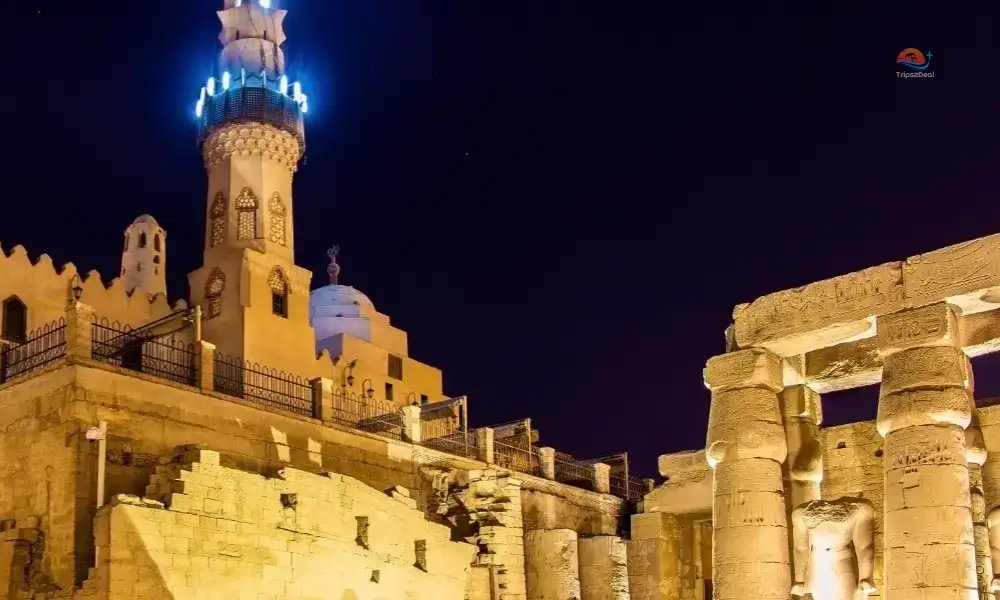
Conclusión:
When you talk about a spot, it’s not about brick, domes, and minarets; the place, Abu El-Hagag Mosque, is something that delivers a living and scholarly legacy of Cairo’s Islamic civilization. From a rooted origin as a shrine to Sheikh Abu El-Hagag to its advanced developments in the reign of different dynasties. This mosque has built a status of faith, devotion, and community life for several decades. This is the reason the visitors prioritize exploring this mosque, a place where humbleness, empathy, love, and spirit coincide.
But, still in this era, the worshippers, pilgrims, and visitors still love to come here dedicatedly in order to serve as a humble reminder of Cairo’s fascinating role as the heart of Islamic spirituality and civilization. As the world is getting revolutionized, the mosque still holds its power and is a beacon of community, guaranteeing that the memory of Sheikh Abu El-Hagag and the cultures of Islamic Cairo are still alive to welcome the generation warmly.
If you are a traveler, history-seeker, and explorer, this mosque is the one who is ideal blend of power, love, faith, art, Islamic architecture, and spirituality. Prepare your visiting list, and don't forget to keep this mosque as a priority. For more information, you can browse trips2deal.com and book your ticket, wherever you want to go in Cairo.



